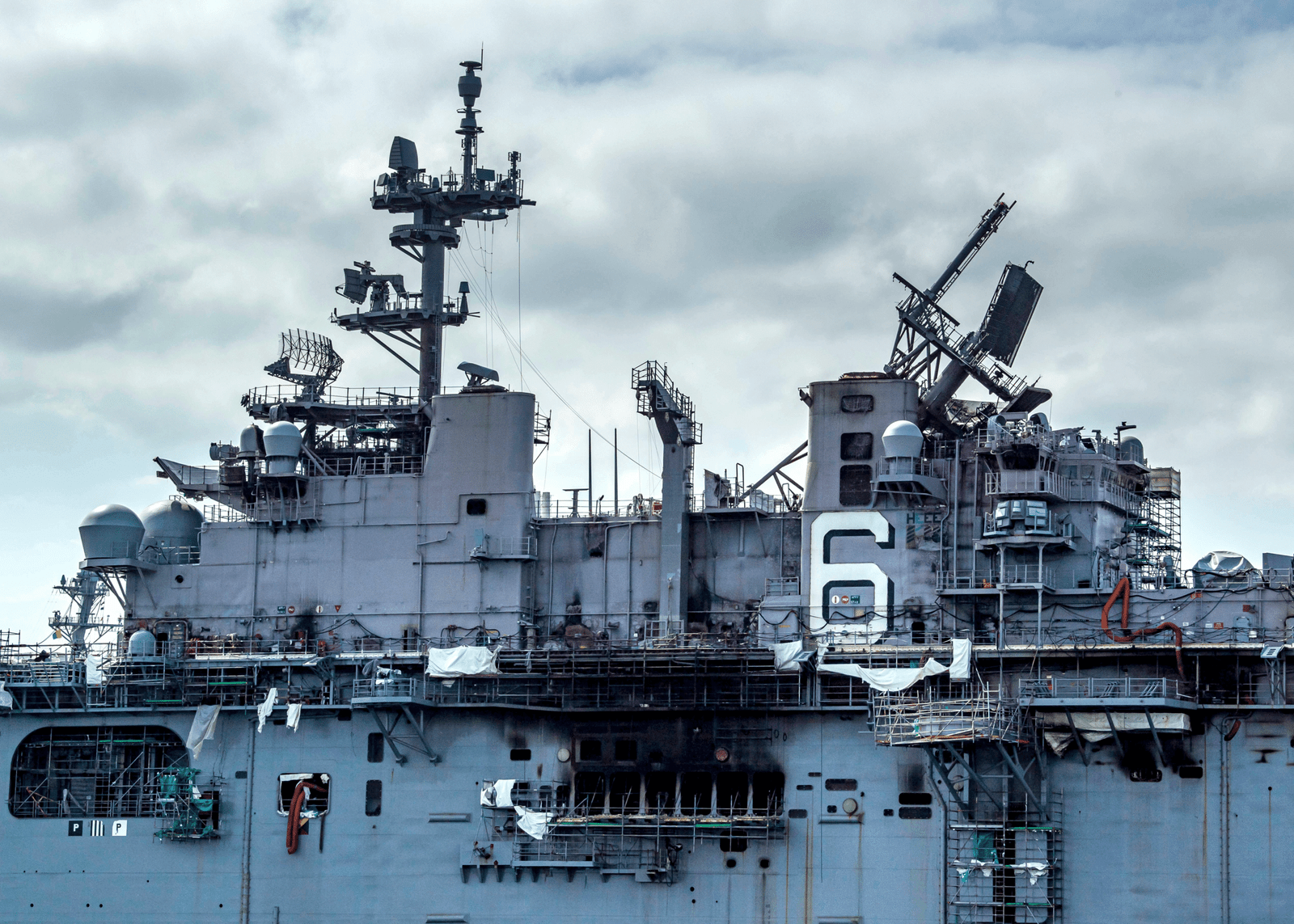
In July 2020, the 22-year-old USS Bonhomme Richard, an amphibious assault ship, caught fire at Naval Base San Diego. Nearly five days of dealing with what went on became one of the most expensive peacetime disasters in the Navy’s history. Ultimately, the ship was no longer salvageable and was headed for decommissioning and scrapping.

However, this disaster was not only about the Navy that lost its ironclad vessels – it was the leak of the Navy’s deep-rooted attitude of safety disregard, deficient maintenance, and weak leadership that were at stake, underlining the issues of readiness and responsibility.

On the morning of July 12, the fire started in the Lower V space of the ship. The Bonhomme Richard was being refitted to the tune of $249 million to enable the support of F-35 fighter jets. The ship’s state made it even more dangerous: nearly 90% of the fire suppression stations were inactive, and the decks were covered with materials that could easily catch fire. It was an accident that awaited occurrence.

To make things worse, communication was almost impossible due to the malfunctioning radios. The sailors had to depend on their personal phones to exchange information. The officer on deck, who was extremely cautious, did not give a general alarm as he misunderstood smoke for a non-serious problem. The crucial early minutes, the time to control any shipboard fire, were wasted. When the fire-fighting teams got to work, they found that there were missing hoses and other equipment failures that security checks should have prevented.

As the fire got larger, civilian firefighters from the base and the San Diego Fire Department came to the rescue, but the coordination was difficult. Crew members and civilian teams worked side by side, but they were not working together, and the incompatible communication made the situation worse.

The situation was made worse by the absence of leadership. According to investigators, there was a “command-and-control vacuum” that resulted in personnel having no clear direction. Only when Rear Adm. Philip Sobeck of Expeditionary Strike Group 3 took over did the response become somewhat organized, but by then, the fire had expanded too much.

An official report showed an unfavorable picture: the shortcomings that kept recurring in training, maintenance, and leadership. Drills were infrequent and poorly attended, and many sailors did not have enough skills to fight fires in shipyards or cooperate with civilian teams. Maintenance neglect left some safety systems less than reliable or completely inoperative. Regional maintenance centers, among others, did not do enough to enforce safety standards or point out risks. They even ignored the lesson from the USS Miami fire in 2012 to a large extent.

The report suggested Navy leaders’ support for the imposition of disciplinary measures, 36 in number, ranging from ship commanders to senior flag officers coordinating safety and maintenance. The mishap was not merely the result of a bad decision but a sequence of failures occurring at various levels. The Navy has not indicated what responses were eventually implemented. The loss was so staggering financially.

Repairing the ship would have cost over $3 billion and seven years. Even though it was repurposed, as a hospital ship, for instance, it would have still been over $1 billion. In the end, the ship was sold for less than $4 million and taken to Texas for dismantling.

The loss brought the Navy’s amphibious assault fleet down to nine ships and delayed the deployment schedule of F-35Bs. Apart from the immediate operational issues, the fire made known a latent flaw: that the Navy is not very capable of replacing or repairing a ship that has been lost non-combat-wise and is a near-term hard loss.

Retired Capt. Jerry Hendrix remarked that the gravest risk is not only that of ships getting damaged or destroyed but also that of industrial and logistical systems that are indispensable to recovery operations becoming unavailable. The fire on Bonhomme Richard is a case that even the biggest, most technically advanced, and heavily armed ships are vulnerable if inadequate safety, less than thorough maintenance, and a lack of leadership prevail. The Navy hereafter has the challenge of implementing the reforms that are reflective of the lessons learned and doing so successfully before another avoidable mishap occurs.
